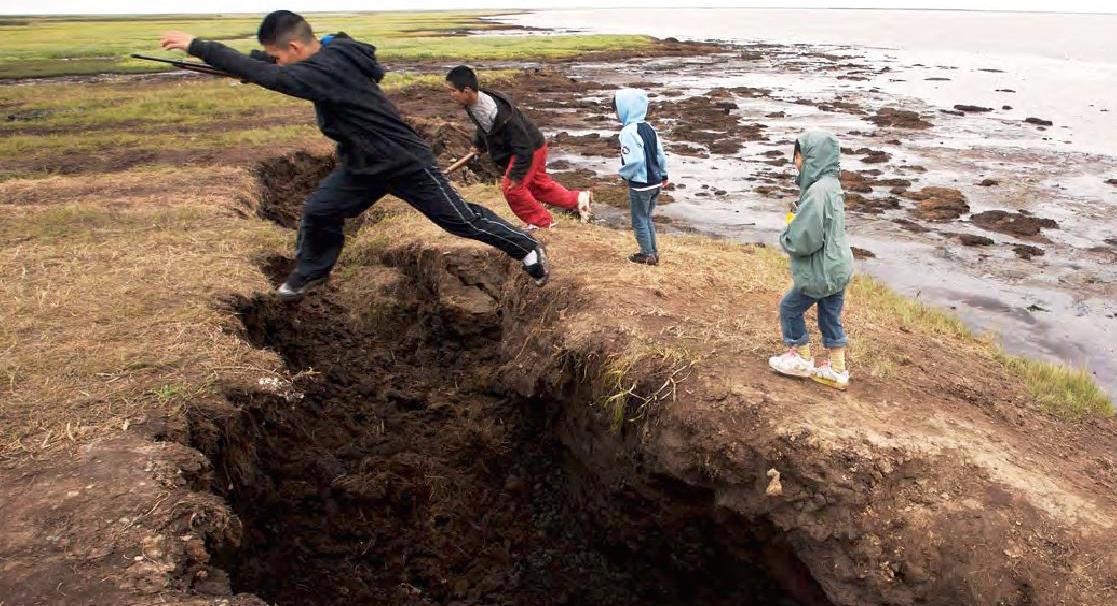The Week Ahead: No slacking off

The Week Ahead is a preview of some of the events related to the region that will be in the news in the coming week. If you have a topic you think ought to be profiled in a coming week, please contact us.
This week, the Arctic will get its annual bill of health when NOAA, a U.S. science agency, publishes its “Arctic Report Card.”
Scheduled to be unveiled on Tuesday during the American Geophysical Union’s Fall Meeting, a huge gathering of scientists from around the world, the Arctic Report Card has since 2006 sought to communicate a sense of urgency about the environmental changes facing the region by providing the public with a clear, concise statement of the observations made during the past year.
For those who keep an eye on the Arctic, the summaries are sadly predictable, if increasingly grim. While the initial report cards offered evidence for the existence of a number of the mostly commonly discussed changes bearing down on the region, including declining sea ice, retreating glaciers and increasing vegetation levels, later updates have noted with worry that these trends had likely left the region permanently altered (2010), and that the effects of rising global temperatures, formerly observed mainly in summer months, were now being seen during winter as well (2016), preventing the region’s environment from getting a vital “reset” before temperatures rose above freezing during the summer.
By some measures, 2017 marked a slowing of the rapid pace of change the region has experienced in recent years: Temperatures, regularly cited as rising at twice the global average, appear have been closer to normal for the region this year. Meanwhile things like melting of the Greenland ice sheet and summer sea-ice melt showed a slower rate of decline than in recent years.
One thing climate scientists must now seek to communicate is that this does not necessarily mean the decades-long worsening of the Arctic environment is beginning to slacken. More likely, they say, is that some of the positive developments in 2017 were the result of natural variability or weather.
Even if the pace of change has slowed, the situation is far from what it once was. For example, although summer sea ice extent, popularly used as a bellwether of Arctic change, did not set a record low in 2017, as many scientists had predicted, it was still the eighth-lowest since 1979, when satellite record-keeping began.
Throwing gas in their general direction
In Russia, President Vladimir Putin holds an end-of-the-year press conference on December 14. Not to be confused with his spring call-in show, the annual marathon event (sometimes lasting four hours) provides Putin with a stage from which to lash out at critics, nationally and internationally, and to tout Kremlin victories during the past year.
The wide-ranging sessions focus on any number of topics, but Putin is fresh back from a visit to Sabetta, on the Yamal Peninsula, last week, where he did the honors during the official opening of the Yamal LNG plant, and he may be keen to remind Russians of the benefits of the $27 billion liquefied natural gas project, particularly as he seeks to build the case for his re-election in 2018.
Economic development of the Arctic has emerged as a main priority for Putin, and Yamal LNG is projected to be the first of at least two natural gas plants that could turn Russia into one of the world’s major exporters by 2035.
Even if that does not happen, Putin can point to China’s involvement in the project as one its successes. In addition to funding 30 percent of the plant’s development, China, a strategic ally with whom Russia does not always see eye-to-eye, has agreed to buy much of its output.
The completion of the plant will also give a boost to traffic on the Northern Sea Route, since all of the gas it produces will be delivered aboard a fleet of 15 custom-built ice-breaking tankers, providing proof of case for shippers interested in using the route to transport cargo between Asia and Europe.
On the foreign policy front, Putin may also highlight Yamal LNG as a victory for the Kremlin, given that its success allows it to thumb its nose at Western sanctions which sought to punish Moscow for its annexation of Crimea by preventing it from developing its energy sector.
December in Québec
On the conference circuit, Québec City hosts the annual Arctic Change [http://www.arcticnetmeetings.ca/ac2017/] conference. The five-day event sees scientists and other scholars sit down with decision-makers from the public sector and industry to address the impact of the region’s changing climate.
This year’s gathering is expected to draw some 1,500 participants, making it one of the largest Arctic-related events to be held in Canada. The choice of Québec City as host further underscores the province’s emerging interest in the Arctic. In addition to incorporating the region in its Plan Nord development strategy, provincial leaders have been prominent participants in Arctic Circle events in recent years, including hosting one of the organizations’ Forum events in December 2016.
Other events:
Members of the Arctic Council’s Sustainable Development Working Group and the Nordic Council of Ministers gather in Rovaniemi, Finland, on Dec. 11-12 to discuss how to use environmental-impact assessments to ensure the sustainability of economic development made possible by the changing climate in the Arctic.
World leaders and other top-level decision-makers gather in Paris on December 12, on the second anniversary of the Paris Agreement, to discuss how to keep the world’s focus on the carbon-pollution reduction goals it sets out. A main focus of this event will be to determine how those working in public and private finance can contribute to efforts to preventing climate change.